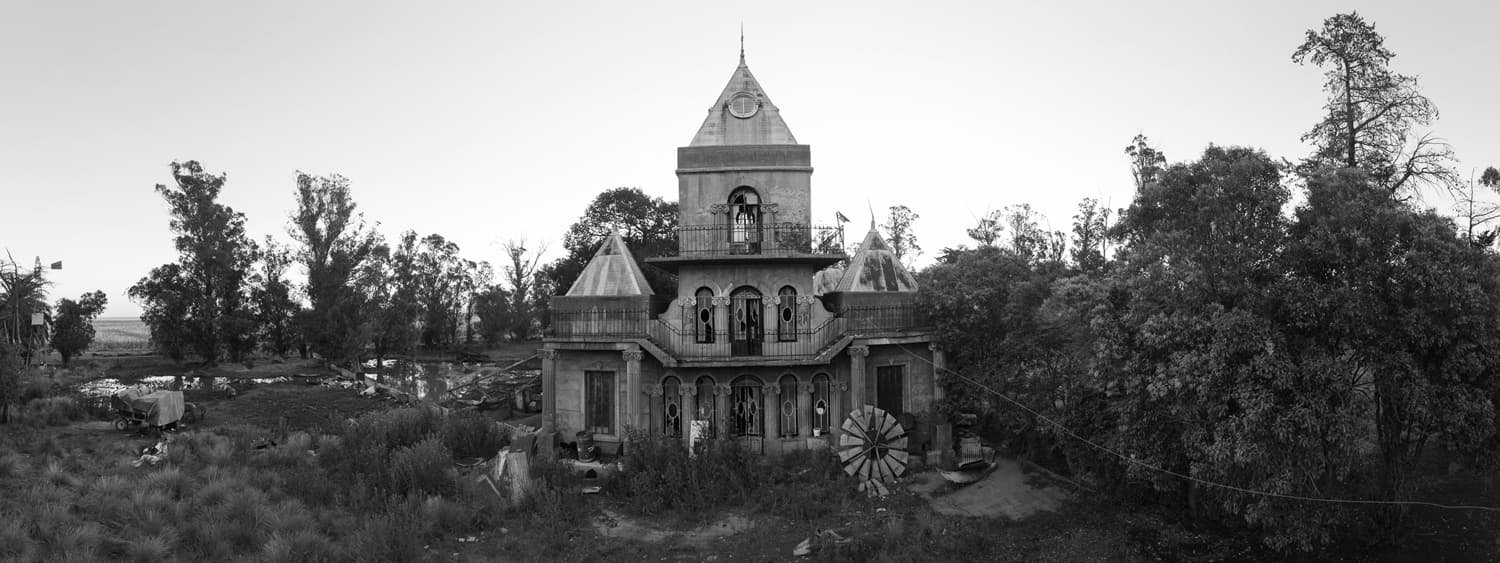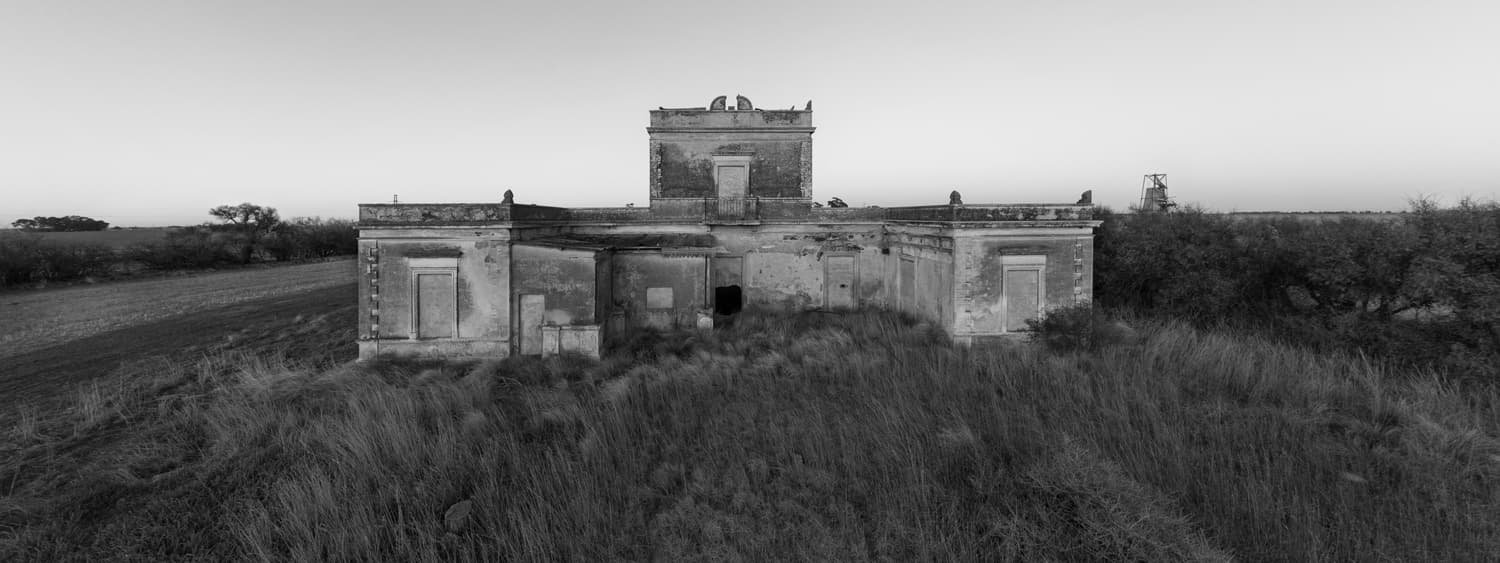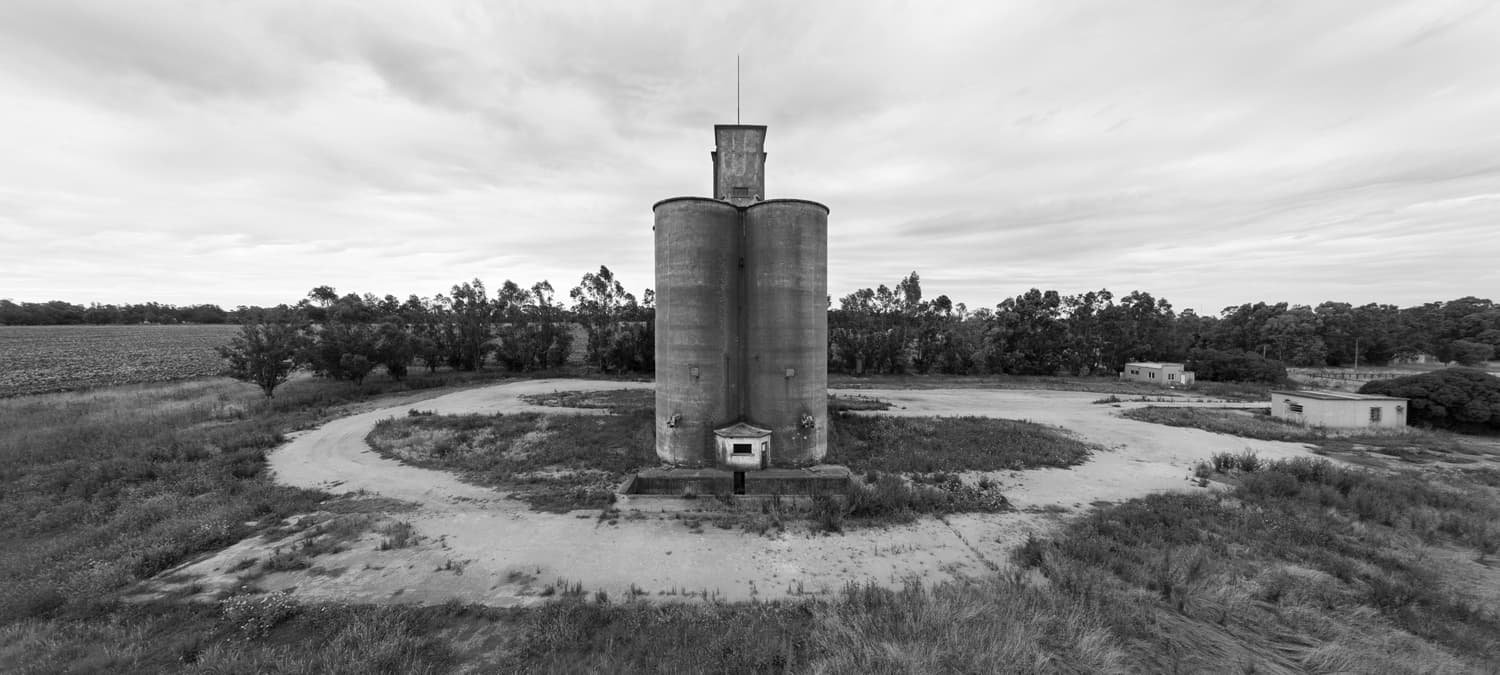Thomas Kellner & Guillermo Srodek-Hart
an online exhibition
Presented together, the work of Thomas Kellner and Guillermo Srodek-Hart examines how aspirations are embedded into architecture. Their work nods to photographic and social history and contemplates how the promise of socio-economic prosperity built on the idea of industrialization is expressed. Their black and white photographs of architectural subjects personify the hope for an industrial rise powered by the worker, now replaced by machines.
The work of Thomas Kellner and Guillermo Srodek-Hart connects to the topographic tradition established by Hilla and Bernd Becher and continued by those they influenced, such as Andreas Gursky, Candida Höfer, Thomas Ruff and Thomas Struth. Pairing Kellner and Srodek-Hart causes reflection on how aspiration is expressed through architecture in the modern era. True to tradition that sparked them, the low-contrast black and white images by Kellner and Srodek-Hart at first seem sterile and cold, grey, even lifeless, but the sense of wonder their works achieve rescue them from reduction to formulaic. Both photographers rely on a layer of technology to solicit this emotional response.
Half-timbered Houses of the Siegen Industrial Area Today | 2021 by Thomas Kellner
To make Half-timbered Houses of the Siegen Industrial Area Today | 2021 Thomas Kellner re-processed images he first made by commission for his hometown’s office of tourism. Few of the now emblematic low wood construction buildings remain, most were destroyed by war or progress. Those attached to the Becher legacy are rarer still. The surviving half-timbered houses have been hard-worn and “modernized” by subsequent generations of working class. The homes were originally built by immigrants who came to work in the mines or blast furnace plants in Siegen, the oldest iron-producing area of Europe. Kellner revisited his own straight images of the Becher homes, altering them by softening space, removing nearly all but some small hints of color. The effect of Kellner’s magical realism is dreamlike.
Rural Installations by Guillermo Srodek-Hart
In Rural Installations Guillermo Srodek-Hart uses traditional and contemporary approaches to explore spaces in the Argentinian countryside. A 4x5 camera was used in spaces easily reached and a drone camera was deployed to explore spaces he couldn’t otherwise access. His aethereal 4x5 images and clandestine panoramic views focus on a triad of related subjects- grain elevators, estates, and gas stations. The works fantastic aesthetics- soft edges or unnatural position add dynamism and uneasiness. Srodek-Hart’s frames both ground us and allow us to float. These places speak to the way new horizons promise a manifest destiny. As the half-timbered homes, these structures were also built by immigrants and express meaning through design. The estates engage individuality overtly in curious ways, while the grain elevators are paradoxically mass-designed to be “identical” for economic purposes and present their distinction through evidence of use.
What is exposed by Kellner and Srodek-Hart’s work in context is a sense of ambition. These photographs record evidence of hope and prosperity. People impose not only functionality but aspiration into their architecture. These emotions are evident no matter how much time passes between their building and the present day, perhaps more poignantly as use falls to disrepair and abandonment.
Kellner and Srodek-Hart’s subjects symbolize the promise of socio-economic prosperity built on the idea of industrialization. These were places for workers, symbols of the march of progress- the possibility of mobility through labor, individuality through design. Cross-continents, these were the first homes for the generation that built and occupied them. Seen together they are reminders in a tug-of-war between the independent and the mass. These structures are all receptacles for bounty of production; photographs of them personify the hope for an industrial rise powered by the worker, now replaced by machines. The tension of their abandonment heightens in an atmosphere where we are again at the precipice of technological advancements promising better futures on a new horizon.
Talsbachstraße by Thomas Kellner
About the Artist Thomas Kellner
Thomas Kellner (b. 1966 - , Bonn, DE) studied art, sociology, politics and economics at the University of Siegen. After receiving the Kodak Young Talent Award, Kellner determined to peruse life as an artist. He has since exhibited internationally in numerous solo and group exhibitions. Kellner’s works are in such prominent public collections as Fox Talbot Museum, George Eastman House, Library of Congress, Museum of Fine Arts Houston, The Art Institute of Chicago, among others. He has served on the German Society for Photography (DGPh) since 2003.
Jutland by Guillermo Srodek-Hart
About the Artist Guillermo Srodek – Hart
Guillermo Srodek-Hart (b. 1977- , Buenos Aires, Argentina) earned his BFA from Tufts University and the School of the Museum of Fine Arts and MFA from Mass College of Art. His work has exhibited internationally, including at the 55th Venice Biennale. Samples of Srodek-Hart’s work may be found in the permanent collections of the Attleboro Museum of Art, Danforth Museum of Art, Kiyosato Museum of Photographic Arts, Larriviére Collection, North Dakota Museum of Art, Nelson Atkins Museum, and Santa Barbara Museum of Art, among others.













